Scrum Makes Sense For Startups: Part Two
In our last blog, we discussed how the Scrum framework can be helpful to startups who are looking to get the most amount of work done as quickly as possible in order to get it on the market as soon as they can. We also talked about how Scrum is an adaptable framework that can change the way you think about your final goal.
In today’s entry, we will talk about why moving towards iterative development can be so beneficial for your startup team in an age that demands speed and flexibility. If you want your team to start working more efficiently, call us at Big Orange Square. We offer public classes about Scrum and agile development as well as personalized training programs built specifically for your team. We have trained more than 15,000 people over the last 10 years and we can help you, too.
Iterative Development
Iterative development is the cyclic process of developing a prototype, testing it, and then refining the prototype after analysis. While this might not sound much different than the way that products and some software is traditionally built, it is actually a different process. While traditional development focuses on taking steps in order, iterative design instead looks at the final product as a collection of products that must each be built in order for the final product to function correctly. By accepting this model, teams don’t have to wait for other pieces to be completed in order to complete theirs. Instead, teams work in parallel to build the products that will then combine in the end for the final product that you want to take to market.
Each team works on their own product separately but they all come together frequently to share their findings and to show the others how their product will eventually fit in with the others. By repeating this process of prototyping and refining, each team is solving problems every day that might otherwise take weeks, months, or even years, to be discovered. The iterative design and development process basically creates a large number of scenarios that mirror the actual use of your product by users without having to risk the bad press that follows broken software or a product.
At Big Orange Square, our approach to teaching Scrum is tailored to both software and physical product development. Our method will help you work through the processes and make your work move more quickly by actually engaging your minds with hands-on training. We have found that tactile training yields the best results by showing teams that the prototyping process is much less scary than they think it is and that it yields faster results with better solutions.
Contact us today to find out how we can help your startup team get off on the right foot. We have years of experience helping software development teams get started with agile Scrum and we have tailored these processes to work with physical product development in a way that hasn’t been done before.








